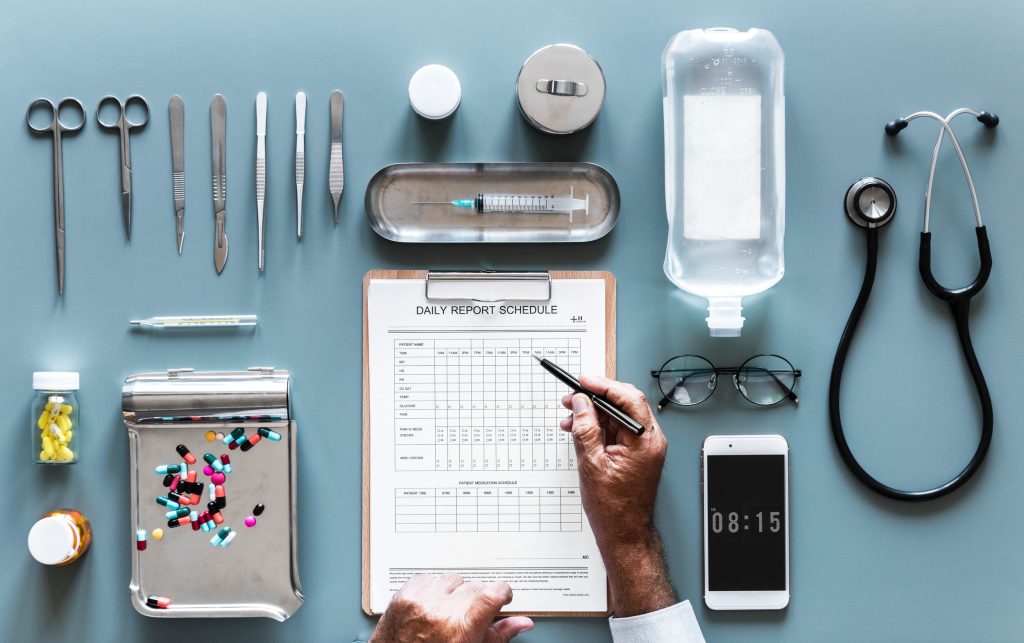The Healthcare sector is undergoing substantial change as technology improves and people’s attitudes change leading to evolution and adaption being a necessity. As this is occurring, new advancements in office technology provide opportunities for groups in health care to work collectively, manipulate and access data. Advancement in healthcare equipment and technology will also improve communication between individuals, relatives, other employees, and collaboration with interdisciplinary teams in ways which could only be imagined a couple of short years back.
This informative article will determine a few of the technologies that are going to have maximum impact on office environments, not just in health but also in other market sectors, during the upcoming few decades.
Internet of Things (IoT)
Wearable technologies would be the ideal example of “items” that utilise electronic equipment, detectors, software and connectivity to allow items to exchange information through the Web with no human intervention. However, this is merely the tip of the iceberg concerning IoT capacities, and IoT spending is set to achieve $770 billion in 2018 based on a market intelligence firm.
A wise company will use the Internet of Things (IoT) technology to harvest data regarding the employees that occupy its own spaces and the construction systems which provide electricity, temperature control, fire protection, and additional solutions. With this chosen data, technologies will recognise trends, measure performance, and utilise the data to understand occupancy and usage, forecast future trends and version ‘what-if’ situations. For example; a healthcare supplies company would use this technology to keep on top of health equipment sales and compare it to the money they are spending on accommodating the company.
Smart Clothes
Wearable technology is very mainstream, and several men and women are currently monitoring their physiological tasks, heart rate and sleep routines every day. Consumer healthcare wearables contain smartphone programs, torso straps, sports watches and other tracking detectors which may be worn on your system. The next generation of smart clothes will incorporate these technologies built into the cloths, which makes it much simpler to integrate wearable technologies into the lifestyle.
Wearables are also used in clinical trials requiring therapeutic areas such as quality of life, cancer, asthma, diabetes and schizophrenia. Along with supplying benefits for clinical research, wearable medical devices may also offer direct patient gains by eliminating the requirement to maintain manual records and lowering the amount of on-the-go clinical visits.
Additionally, there are e-skin devices that could detect approaching items and measure temperature and applied pressure. Scientists are working on incorporating e-skin apparatus that turn skin into a touchscreen screen using detectors along with a micro-projector.
Voice Activation
Speech Recognition with present technologies from Amazon, Apple, Google and others are going to offer multi-lingual support for utilising voice recognition to control and record with different health care systems.
As speech recognition technology continues to enhance, individual consumers will be well known and provided with proper access to rights and skills. For locations where using speech management could be too sensitive or not proper; Gesture controller, where motions of your head, hand, arm, fingers, and eyes have been translated into particular action asks, will also be an alternative.
Virtual and Augmented Reality
Immersive Virtual and Augmented Reality systems provide low-cost accessibility to 3-dimensional visualisations and examples of information in real time across multiple places. Augmented Reality enables organisations to overlay right information on a user’s device or smart-glasses.
Digital Reality additionally promotes immersive video conferencing and meetings which could bring geographically-dispersed staff into a single virtual, assembly space.
Using One’s Tech
Bring Your Own Device (BYOD) enables employees to right-size tech devices, like their own telephones, tablets or private computers which they can use both in the office and at home.
To encourage employee wellness, connected furniture permits users to control their desk height, light rates and other ergonomic factors and employ those settings at each of the areas that they use throughout an enterprise.
Enriched Staff Communications

Medical employees spend substantial time ‘hunting and gathering’ and other low-value actions when they might be gainfully used on high-value tasks like working with other employees, patients, and relatives.
Iris and fingerprint scanners, facial recognition systems and other Biometric Security Systems will ease solitary sign-on to computers, access to printers, the direction of the Room Reservation System, interfaces together with Access Control programs and interaction with other technologies systems.
